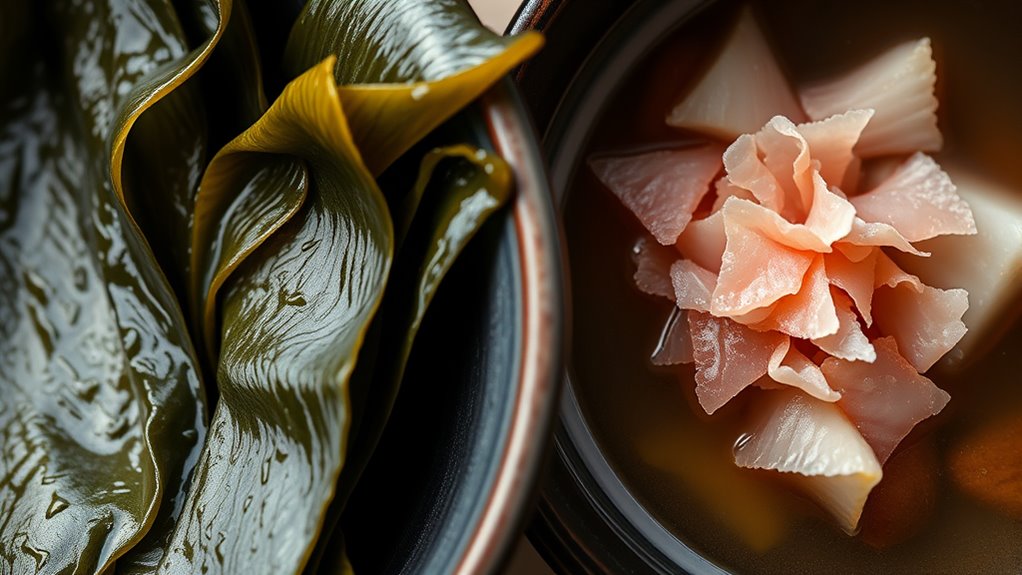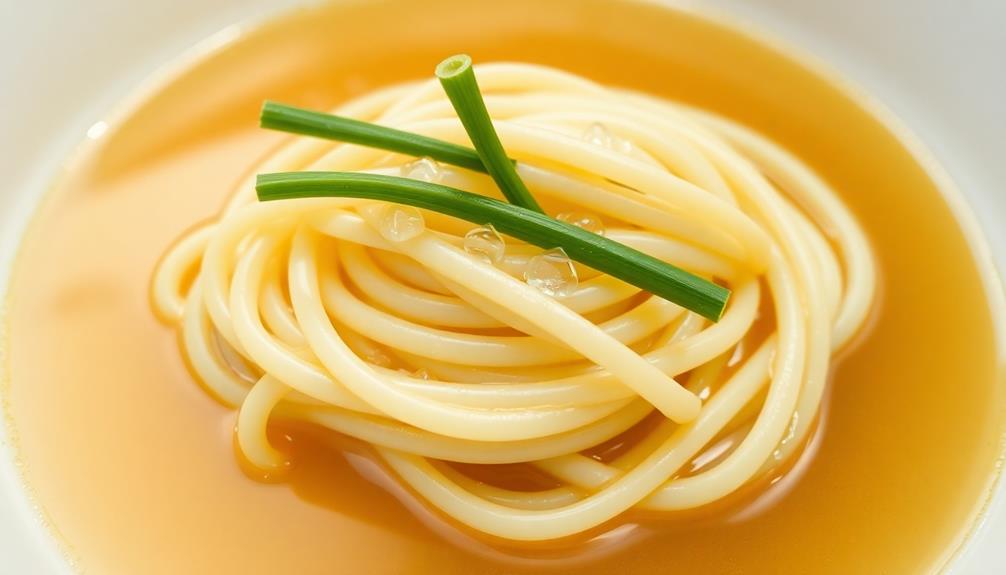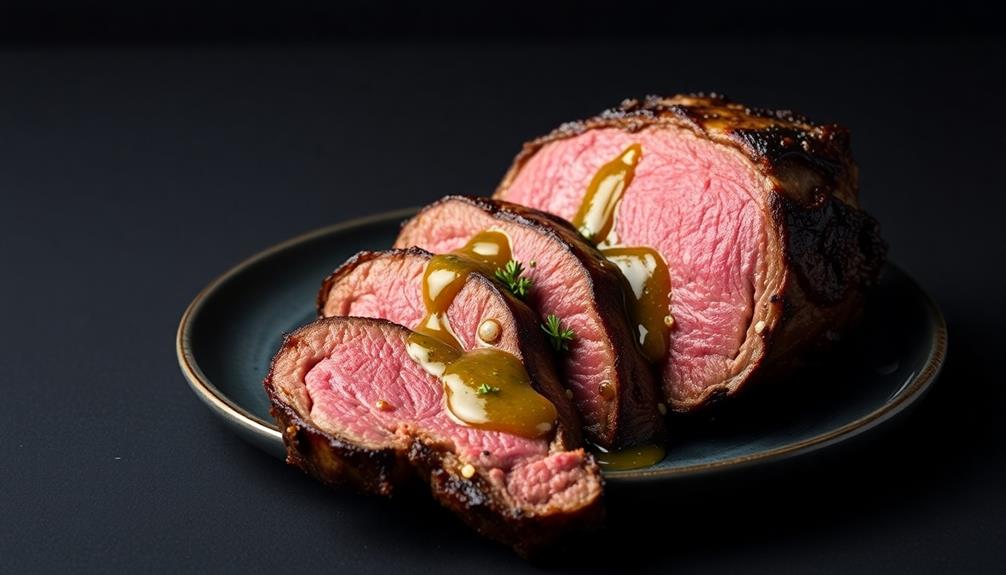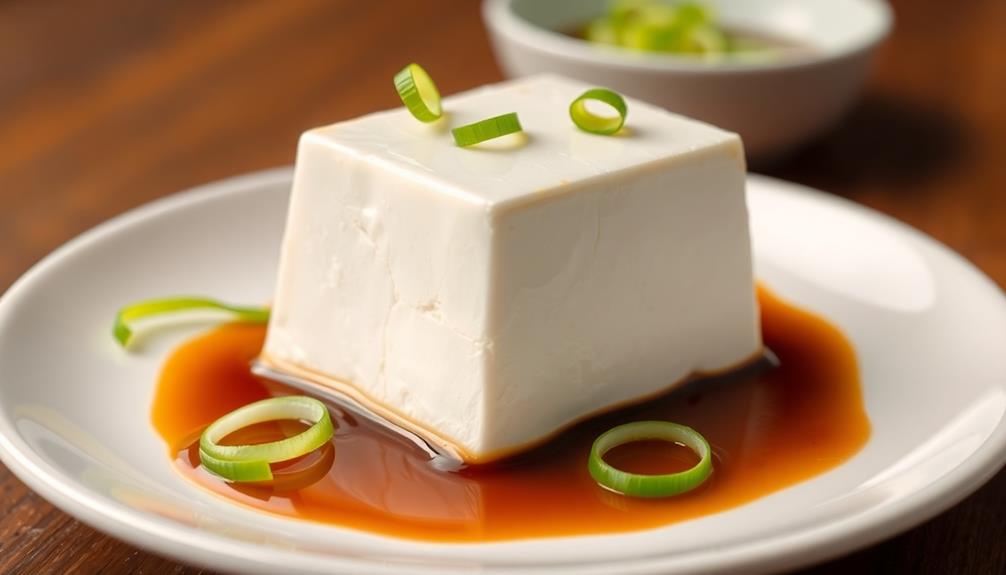In Japanese dashi, kombu provides glutamates that naturally boost umami, while bonito flakes release inosinate, which intensifies this flavor. When combined, these compounds work together through a flavor synergy, creating a deeper, more complex savory taste that’s essential for authentic broth. Mastering how to extract and balance these ingredients enhances your dashi’s richness. If you keep exploring, you’ll uncover even more ways to perfect this essential component of Japanese cuisine.
Key Takeaways
- Kombu provides glutamates, the primary compounds responsible for umami flavor in dashi.
- Bonito flakes supply inosinate, which amplifies umami through flavor synergy with glutamates.
- The umami intensity is enhanced when glutamates and inosinate interact, creating a richer, more complex broth.
- Proper extraction techniques maximize glutamate and inosinate release, ensuring balanced umami without bitterness.
- Combining kombu and bonito leverages their complementary compounds for the signature layered umami in Japanese dashi.
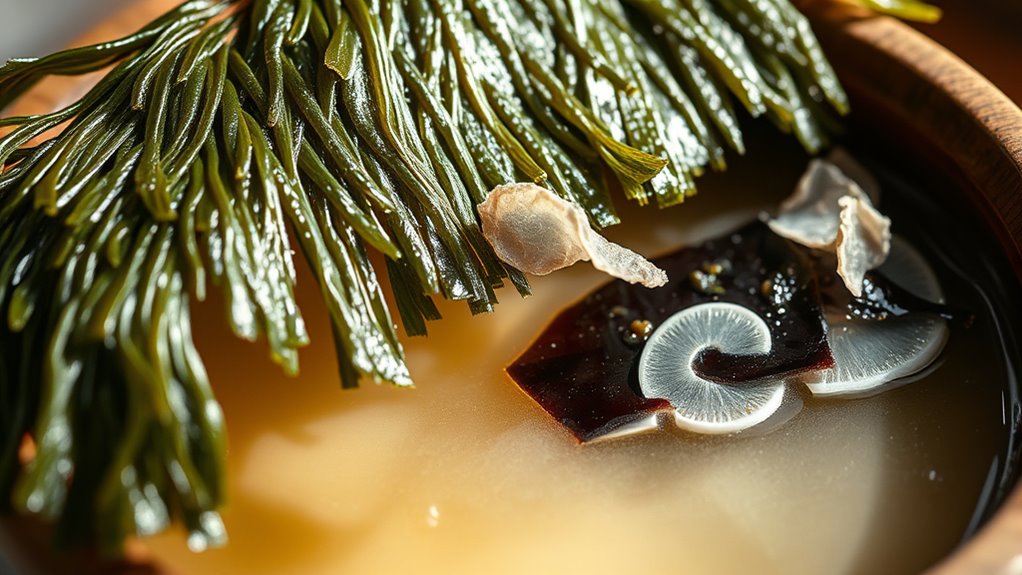
Have you ever wondered what gives Japanese dishes their signature umami flavor? It’s a combination of carefully chosen ingredients and precise ingredient extraction, with dashi standing at the heart of it all. Dashi, the fundamental broth in Japanese cuisine, is renowned for its deep, savory taste that elevates soups, stews, and sauces. The secret lies in how the umami flavor is developed through the interaction of different ingredients—primarily kombu and bonito—and how their unique compounds work together to enhance taste.
Kombu, a type of kelp, is rich in glutamates, naturally occurring amino acids responsible for umami. When you soak or simmer kombu, the process of ingredient extraction pulls these glutamates into the broth. This process isn’t just about flavor; it’s about *liberating* the full potential of the kelp’s umami properties. The longer you simmer, the more glutamates are released, creating a rich, savory base. This extraction process is delicate—overcooking can turn the broth bitter, so understanding how to balance time and temperature is essential. The result is a broth with a clean, mineral-rich umami flavor that forms the backbone of many Japanese dishes. Additionally, the presence of natural umami compounds in kombu makes it especially valued in traditional cooking. Proper extraction techniques are crucial to unlocking the full flavor potential of kombu without sacrificing broth quality.
Extracting glutamates from kombu releases rich, mineral umami flavor essential to authentic Japanese broth.
Bonito, another key ingredient, introduces inosinate, a nucleotide that complements the glutamates from kombu. When bonito flakes are added to the broth, they release inosinate, which amplifies the umami sensation through a process called flavor synergy. This synergy isn’t just additive; it’s multiplicative. The inosinate and glutamate molecules work together, heightening the savory taste far beyond what either could achieve alone. This is what makes traditional dashi so complex and satisfying. The precise timing of adding bonito flakes and the method of drying and shaving them directly influence how much inosinate is released, emphasizing the importance of technique in ingredient extraction.
Furthermore, recent advancements in cybersecurity vulnerabilities related to digital tools used in ingredient sourcing and recipe sharing highlight the importance of secure practices in traditional food preparation. When combined, kombu’s glutamates and bonito’s inosinate create a powerful umami partnership. Their interaction results in a more profound, layered flavor profile that’s both savory and nuanced. This synergy is why Japanese dashi is considered more than just a broth—it’s an art form of ingredient extraction, blending natural compounds to produce a taste that’s both simple and deeply complex. Understanding the role of precise extraction techniques can help you optimize flavor development and craft a truly authentic broth. As you prepare dashi, understanding how each ingredient contributes to the umami flavor through careful extraction will help you craft a broth that’s rich, balanced, and truly authentic.
Frequently Asked Questions
How Does Water Quality Affect Dashi Flavor?
Water quality greatly influences dashi flavor because mineral content and pH levels impact how the umami elements develop. If your water has high mineral content, it can enhance or overpower delicate flavors, while low mineral levels might make the broth taste flat. Similarly, water pH levels affect extraction; slightly acidic water brings out richer umami, whereas alkaline water can dull the taste. Using good-quality, balanced water guarantees a flavorful, well-rounded dashi.
Can Dashi Be Made Vegan Without Losing Umami?
Did you know plant-based broths can provide over 80% of umami compared to traditional dashi? You can make vegan dashi without losing umami by using ingredients like kombu, shiitake mushrooms, and nutritional yeast. These umami enhancers pack a savory punch, making your broth rich and satisfying. With the right combination, you get a flavorful, vegan-friendly broth that rivals traditional dashi in depth and complexity.
What Is the Shelf Life of Homemade Dashi?
You wonder about the shelf life of homemade fish stock and how to preserve its flavor. Generally, you should store it in an airtight container in the refrigerator, where it stays good for 3 to 4 days. For longer storage, freeze it, and use within 1 to 3 months. Proper storage guarantees flavor preservation, preventing spoilage and maintaining that rich umami taste in your dishes.
Are There Regional Variations in Dashi Preparation?
You might think all dashi tastes the same, but regional flavor profiles tell a different story. In Japan, traditional techniques often use dried ingredients and long simmering, while modern methods may incorporate quick, convenient options. Regions like Kyoto favor richer, umami-packed dashi, whereas coastal areas emphasize bonito-based broths. These variations showcase how local tastes and techniques shape dashi’s unique character across Japan.
How Do Storage Methods Impact Dashi’s Umami Potency?
Storage techniques critically impact dashi’s umami potency. If you store dashi improperly, it loses flavor quickly due to oxidation and evaporation. To preserve its umami, keep it in airtight containers and refrigerate promptly. Avoid prolonged storage at room temperature, which diminishes flavor. Proper storage guarantees ideal flavor preservation, maintaining the rich, savory taste that makes dashi a essential component in Japanese cuisine.
Conclusion
So, when you blend kombu’s glutamates with bonito’s inosinate, you’re orchestrating a flavor symphony that’s richer than the sum of its parts. It’s like a dance where umami notes twirl and mingle, creating a depth that lingers on your palate. This harmony isn’t just a recipe—it’s a culinary poetry that transforms simple ingredients into a soulful melody. Embrace the synergy, and let your dishes sing with the rich, umami crescendo.
